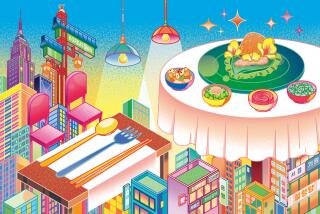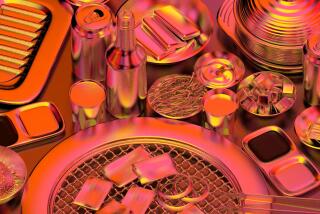More to Hong Kong Than Eating and Shopping
HONG KONG — Be prepared.
As soon as you announce a trip to Hong Kong to friends who’ve already been, you will find the city airily dismissed as rather a bore.
“There’s nothing to do there,” you’ll be authoritatively told, “except eat and shop.” It’s as if a biblical curse had been put on the place, dooming it to be forever barren in every other area because it was so fertile in those two.
Eating and shopping are fine in their places, and while Hong Kong’s fame as an epicenter of those activities is nothing if not deserved, most people would be hard-pressed to fill up 24 hours doing nothing but one or the other.
So I’m delighted to be able to report that Hong Kong has all kinds of unexpected pleasures and sites.
Not only that but the city has a model subway system, dirt-cheap, clean and neat, scandalously efficient and splendidly air-conditioned, even on the steamiest of days. Use it to investigate any or all of the following activities:
Hong Kong’s biggest secret is that it is a breathtakingly beautiful city, ravishing in a way that puts San Francisco to shame.
Built straight out of rock and landfill on the thin edge of both Hong Kong island and Kowloon across the water, this is a city of astonishing vertical density, a forest of cutting-edge architecture by the likes of I. M. Pei and Norman Foster.
That alternates with concrete toothpick residential towers that are so narrow that a journalist wrote that the city’s developers “could probably build 50-story dwellings on a sixpence if there was enough of the crinkly green stuff in it for them.”
There are any number of ways to view all this, the most traditional being the less than 15-cent ferry ride, which will not seriously dent anyone’s budget, and a tram to Victoria Peak, the city’s highest point.
That ride has been a top tourist attraction for more than 100 years, but don’t let that stop you. As my mother used to say, “If so many people go, there must be a reason.”
The most stunning way to see the city, however, is to return on a boat from nearby Macao.
After passing open water and deserted islands for close to an hour I got my first glimpse of Hong Kong (an island that by rights should have been as empty as all the others) and its massed buildings, towering citadels glistening in the sun like Oz’s Emerald City. It seemed so astonishing that I understood for the first time what it must be like to experience the most beautiful of mirages.
Because it is scheduled to revert to China in 1997, the June 4 uprising in Beijing hit Hong Kong extremely hard, and visiting the city now has the extra drawing impetus of being able to witness history being made.
Every day seems to provide a new chapter in this continuing drama. When I was there, the extensive pro-democracy demonstrations that had just ended were on everybody’s lips and were almost immediately followed by a near-riot outside the Singapore Commission when that country relaxed its emigration criteria.
The Hong Kong English language paper, the wonderfully named South China Morning Post, provided excellent blow-by-blow coverage of those events, and its letters page, in which the city daily pours out its rage and uncertainty, was the first thing I turned to in the morning.
Tiger Balm Gardens: The entrepreneur behind the Chinese version of Ben-Gay spent $16 million Hong Kong dollars in 1939 on this boggling collection of garishly colored, larger-than-life statues that curve around steep, narrow paths and fill artificial caves and grottoes in Aw Boon Park.
Come face-to-face with the Dragon King, the Wedding of the Pig and the Rabbit, the Laughing Buddha and Master Hui-neng, the Sixth Patriarch, who was said to have survived without food or water for 24 years--and looks it.
In case all this sounds impossibly frivolous, it should be noted that each and every grouping is intended to teach a moral lesson. One astonished guidebook calls it “three hectares of grotesque statuary and appalling bad taste,” but hey, what are vacations for?
Supreme Court: Sit in on any one of several trials in progress, everything from murders to stock manipulation, in a courtroom so completely British, from bewigged barristers to frowning judges, that you’ll feel you’ve walked into an Oriental version of “Rumpole of the Bailey.”
Look on in awe as the minions of the law say things such as, “There seems to be an element of arbitrariness and capriciousness which is totally unexplained.” Don’t worry about choosing which courtroom to go to because the guard at the building’s entrance will be more than happy to steer you to what’s hot and what’s not.
Bird Street: The Chinese people love birds with a marked intensity, even taking care to spray them carefully from tiny atomizers on particularly steamy days.
Hong Lok Street on the Kowloon side is the mecca of the bird trade, with all kinds of tweeters, large and small, for sale and singing their little hearts out. Also for sale are hand-painted bird feeders and the most delicately and elaborately carved wooden cages, objets d’art every one.
Movies may seem like the kind of stuff one could just as well get at home, but viewing one in a foreign environment, as I discovered when I saw Woodstock treated as a skin flick in a neighborhood theater in East Jerusalem, tells you a surprising amount about the culture that you’re visiting.
If possible, catch something by Jackie Chan, the hottest box office star in Asia. I was able to experience Chan’s latest blockbuster, “Mr. Canton and Lady Rose,” an amiable period piece set in old Hong Kong, with the star as a bumbling gangster with (what else?) a heart of gold.
Its shrewd cross-pollination of sentiment and action came out as if Jimmy Stewart had a joint production deal with Bruce Lee and was exactly what the audience wanted. English subtitles made it all understandable, but the Chinese-only commercials that preceded the feature were truly inscrutable.
The Terrace at the Hotel Bela Vista: Macao, the site of this hotel and a one-hour jet foil trip away, is a ne’er-do-well version of Hong Kong, so down-at-the-heels it’s rumored that although Portugal is eager to give it back, the Chinese aren’t at all sure they want to take it.
And if you’ve ever read Somerset Maugham or Joseph Conrad and longed to visit the exotic East as it used to be, this crumbling 100-year-old relic, redolent with the fragrance of colonialism gone to seed, is just the ticket.
I stumbled onto the terrace overlooking the harbor, exhausted from a morning’s sightseeing, and as I relaxed over my drink while watching the ceiling fans slowly turn past peeling wooden shutters and pockmarked columns, I felt I was truly inhabiting a dream.
Walk, walk, walk: Because so much of Hong Kong’s commercial life takes place on the street, strolling around the older districts puts you as close to the traditional Chinese as you will want to get.
Both Yau Ma Tei on the Kowloon side and the Central and Western districts on the island side have been graced with walking tour maps produced by the Hong Kong Tourist Assn., and both are excellent starting points.
Among the sights are herbal medicine emporiums, street barbers, snake shops (snake dishes are reputedly good for toning the blood), coffin corners for the dead, and, for the living, food markets both bloody and otherwise.
Read the phone book: How diverting can that be? Plenty, and informative, too. Looking through Hong Kong’s, you discover two full pages of bone setters, four pages of herbalists and herb teas, 47 pages of restaurants, 32 pages of contractors (lots of building going on) and a whopping 65 pages of importers.
Also of strictly academic interest are the 23 pages of massage services, with ads for the likes of China Girl (“Eastern Way to Ease Western Stress”) and Miss Desiree (“All Fantasies Satisfied”) given prominent display. A cup of that nice herbal tea would no doubt be a safer way to unwind.
Ohel Leah Synagogue: The Sassoons, Sephardic potentates of the first water, donated this building and the land it sits on in 1902 in memory of their mother.
In the midst of the city’s cacophonous bustle, to rest awhile in this tranquil old building, graced with that rarest of local commodities, a quiet, leafy site, is to remember once again that Hong Kong has pleasures above and beyond what know-it-all Occidentals may expect.
For more information on travel to Hong Kong, contact the Hong Kong Tourist Assn., 10940 Wilshire Blvd., Suite 1220, Los Angeles 90024, (213) 208-4582.
More to Read
Sign up for The Wild
We’ll help you find the best places to hike, bike and run, as well as the perfect silent spots for meditation and yoga.
You may occasionally receive promotional content from the Los Angeles Times.







